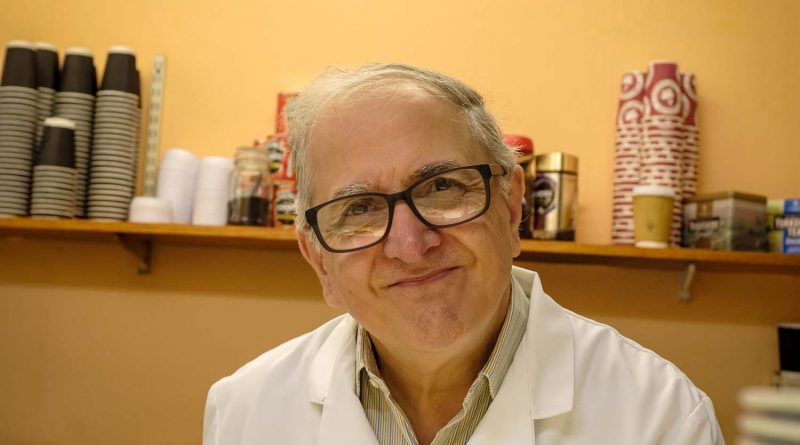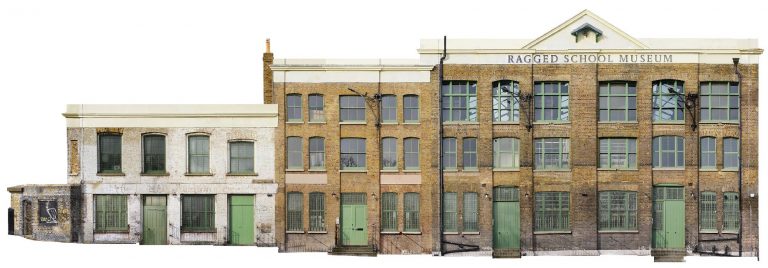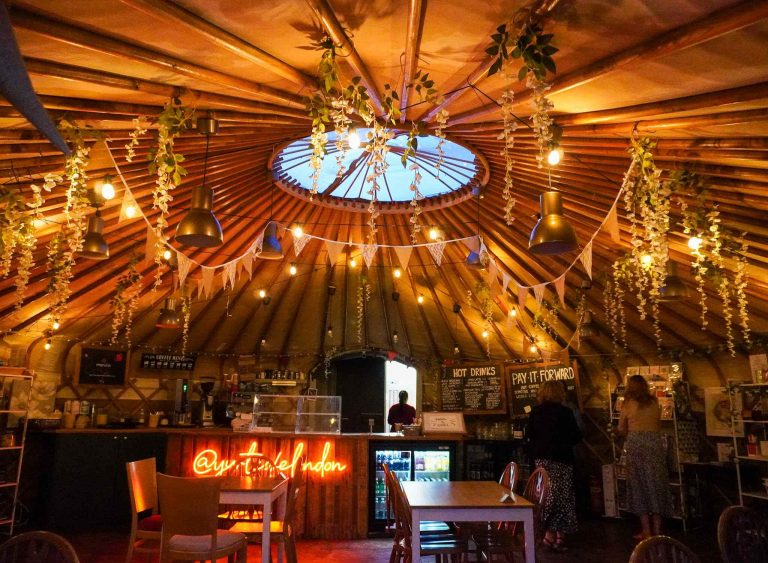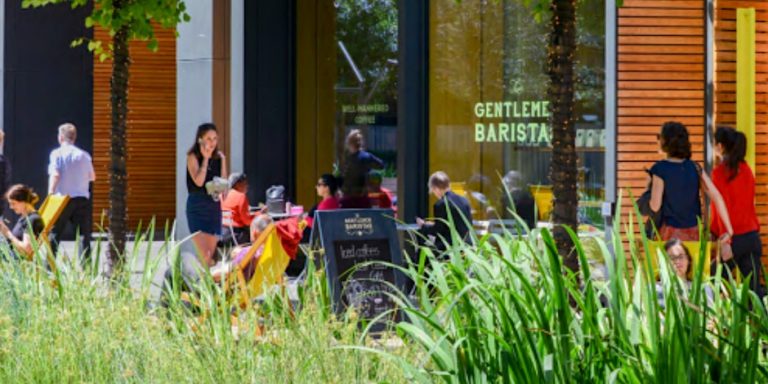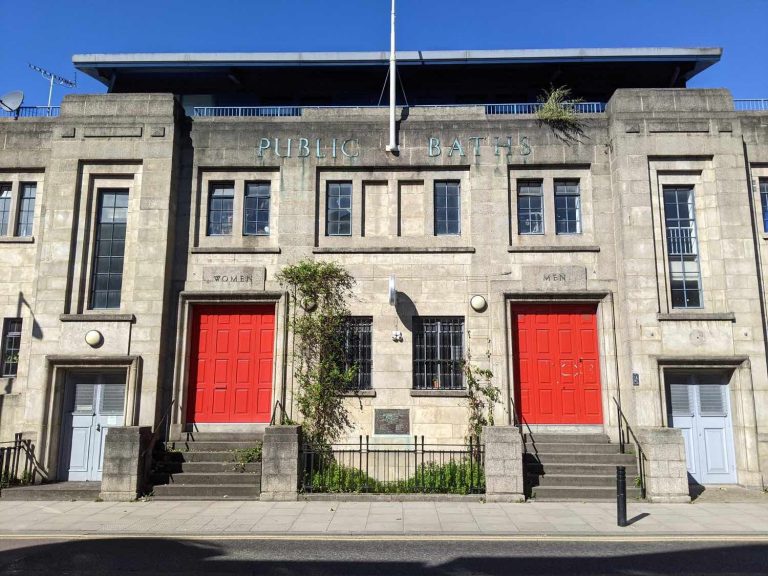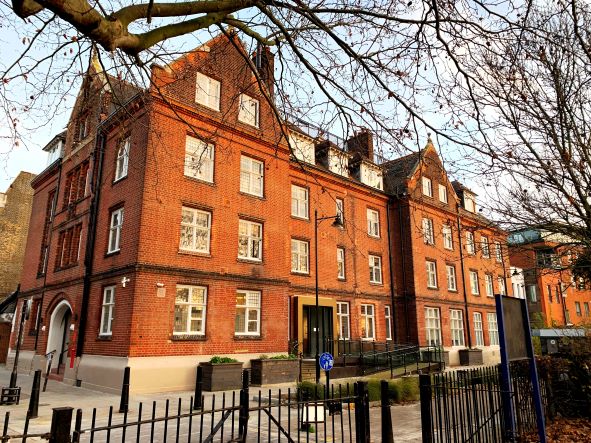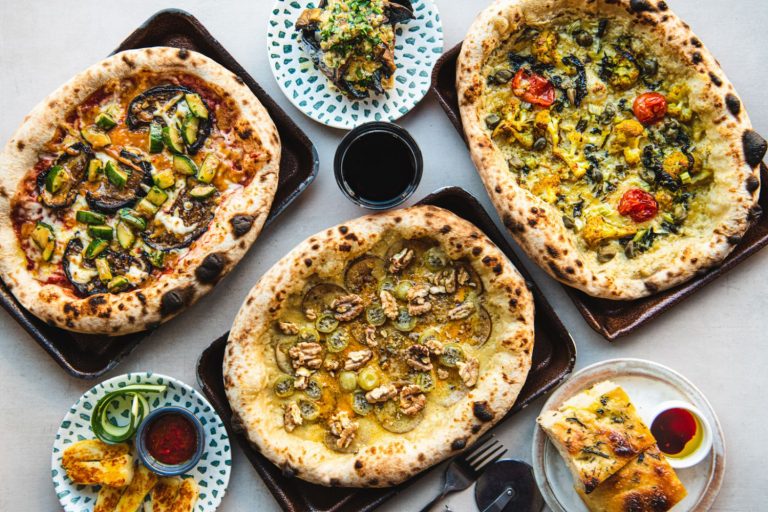Randolfi’s: Time stands still at Roman Road’s longest serving café
Serving Roman Road’s market stall holders, shoppers, and residents for 110 years with tea, cake, and its famed thick deli-cut ham sandwiches, Randolfi’s is an icon.
If Roman Road’s Randolfi’s were a person, it would be the epitome of an East Ender: plain-speaking, salt of the earth, and completely charming.
And this East Ender’s story, like every story, starts somewhere. Only here, no one seemed quite sure when Randolfi’s first appeared on Roman Road.
Estimates placed this century-old family run café as having started trading anywhere between 1906 and 1919. But, speaking to third-generation owner Raymond Randolfi one rather misty autumn afternoon, he confirms that Randolfi’s life began in 1912 at 508 Roman Road, six doors down from its current premises at 514 Roman Road.
We sit at the front of the café on oxblood wooden chairs matched with a weighty marbled table and its wrought iron twirled legs on the speckled linoleum flooring. The days’ worth of activity marked by light condensation on the café’s floor-to-ceiling window. Raymond’s younger brother Michael quietly works in the background. A lightly stained white tea towel has been thrown over his right shoulder, as he refills the fridge with apple and orange juice cartons and restocks the shelves with McCoy’s crisps, Kit Kats, and Twirls.
‘Have sympathy on him. Let him sit here for a while for he has shell shock.’
Vittorio randolFi
As soon as the clock’s hands hit half past two, and the last of the customers close the glass-fronted door, the café’s italic ‘open’ sign is flipped to ‘closed’. The radio, which hitherto pumps out the high-energy beats of the day’s selected pop music, is tuned to Classic FM, and elegant orchestral music soothes the parlour. It is part of the brothers’ winding down ritual for the day, a day which typically starts at 7am.
Early rises and hard work run in the Randolfi veins. Raymond explains that his paternal grandparents, Luigi and Francesca, or Lou and Franny to those in the know (‘Nonna and Nonno to us,’ nods Raymond), came from Montecassino, just over 80 miles south of Rome, and arrived in the East End at the turn of the 20th century. Southern Italy, Raymond says, ‘was impoverished’ and his grandparents were lured to London by its boom in opportunities.
Luigi and Francesca married in 1911 and set up the café a year later. His grandparents typically opened the café at around 8am and worked 14-hour days, closing at around 10pm. When the Great Depression hit in the 1930s, it was known that they would work until 1am, its solitary welcome glow against the black of the night attracting much-needed night-time custom.
Post-war, the East End, and Roman Road market, had a revival. The mid- to late 20th century was the Market’s heyday. It was at this point when Randolfi’s was passed from Luigi and Francesca’s hands to their son Vittorio (who was born in 1915 in the flat above Randolfi’s former shop in 508 Roman Road) and his Scots-Italian wife, Esterina, who hailed from Dundee. Raymond claims his father was named after Vittorio Emanuele II the man who unified Italy, due to his grandfather’s ‘nationalistic inclinations’.
Raymond was a teenager when his grandparents died in the late 60s. While ruminating over the precise dates, he recalls that they died within 17 months of each other: ‘The same as the Duke of Edinburgh and the Queen,’ he adds with solemnity.
Throughout this era, Randolfi’s was the place to be seen. It would gain custom from marketgoers and stall owners; the former eager to rest their feet from a day’s worth of shopping, the latter to rest their hoarse larynxes from a day of shouting.
The café’s best sellers were its ice cream, especially lemon ices, ham sandwiches on white bread, and tuna and sweetcorn. Raymond recalls serving many of the Jewish stallholders who would come in for their egg sandwiches. Some, however, would devour Randolfi’s famed ham sandwiches, surreptitiously, of course, Raymond chuckles.
And through all that, its popularity has remained. Why? ‘Ah! Well, you’d have to ask our customers,’ Raymond says, his smiley eyes peering from above his thick-rimmed glasses.
It doesn’t take long, nor any need to canvass customers, to understand that Randolfi’s owes its popularity to the old-school commitment to genial service that is encoded into the DNA of both Italians and East Enders. This combination means that the trio of Randolfi brothers (for there is also Gino, the oldest brother) is, quite simply, perennially polite.
Gino, who is in his early 70s, is always in a spotless white over-coat. He may appear to be the most reserved of the three but get chatting, and you’ll find his quick wit will have you conversing well after you’ve finished your cheese and pickle sandwich. The middle brother is Raymond. He too can be seen in a white overcoat and his gentle avuncular manner is matched by his kind expressive eyebrows. As for the youngest of the Randolfi’s, Michael, he is often in a light blue short-sleeved shirt and his knowledge of Scottish comedy is remarkable.
No matter if you are 25 or 85, they greet you with a courteous ‘young man’ or ‘young lady’, followed up with, ‘Now, what can I get for you?’
If you haven’t decided, you may stand in a state of mild bewilderment, for the café’s range of food offerings is wondrously lengthy. Three menus are mounted on light custard yellow walls; one for sandwiches and rolls (16 fillings to be precise), one for hot food (which might not get you quite as puzzled for choice with its 11 dishes), and the last for drinks. Items from a bygone era still exist in timeless Randolfi’s; where else can you get Bovril, hot Ribena, and liver sausage? All menus are displayed on an ageless letter board white caps locks against a deep nut brown. No item is more than £4. Your order is paid for in cash.
For those struggling to narrow down their choice by reading the menu may find it easier, or conversely harder, to come to a decision by redirecting their gaze towards the deli’s display. A tub of ochre coronation chicken is next to a small vat of creamy egg mayonnaise. Randolfi’s famed thick slabs of chilled ham are next to the unmistakable traditional tapered pink rectangle that is corned beef.
Once decided, the care taken when constructing the sandwich is inimitable. Margarine is spread right to the edges of the bread, a generous dollop or slab of whatever filling you desire is added, followed up with a careful Jenga-like balancing act of an iceberg lettuce leaf and tomato. The matter of ‘salt and pepper?’ comes next, with a raised eyebrow, usually with the salt shaker in hand. The top layer of bread is added and then, with the steady hand of a surgeon, the sandwich is neatly sliced in two.
Never an afterthought, the sandwich is topped with a sprinkling of lime-green peppery cress and presented on a white plate, accompanied by unfussy stainless steel canteen cutlery. You’ll be hard pressed to find better sandwiches than these.
Small groups congregate for a chinwag, £1 cups of tea, and corned beef sandwiches, followed up by an iced bun topped with a glacé cherry.
The hospitable warmth, but few intrusive questions asked, is the reason why people feel also free to sit alone; any reticence at doing so is kicked firmly out the glass windows, and straight to the market’s curbside. Randfoli’s never judges, they just allow. And it’s been that way for decades.
Raymond recalls that, as a young boy in the 50s and 60s, a figure of an elderly disorientated man, with poor balance, stumbling into the café most days. He would sit down, without uttering a word, and with a peculiar blank expression stare out of the window while Vittorio would hand the man a cup of tea. Turning back to Raymond, Vittorio would say: ‘Have sympathy on him. Let him sit here for a while for he has shell shock.’ A sore reminder and lasting legacy of post-traumatic stress disorder suffered by soldiers of WWI.
Randolfi’s occupied 508 Roman Road until 2008, by which time both Vittorio and Esterina had long since retired and passed on the responsibility of the cafe to their sons.
A change of address could signal change of direction for the establishment but for the last 14 years, the brothers have kept true to Randolfi’s character. It has not gone the way of some other cafés in the area, which carefully curate their image, have a clear target audience, and a specific genre of food they serve. There is, of course, a market for that but, the truth is, cafés like Randolfi’s are becoming an increasing rarity. Politeness, sprinkled with East End charm, pays and it doesn’t cost a penny. And, that is why Randolfi’s continues to thrive without ever needing to change.
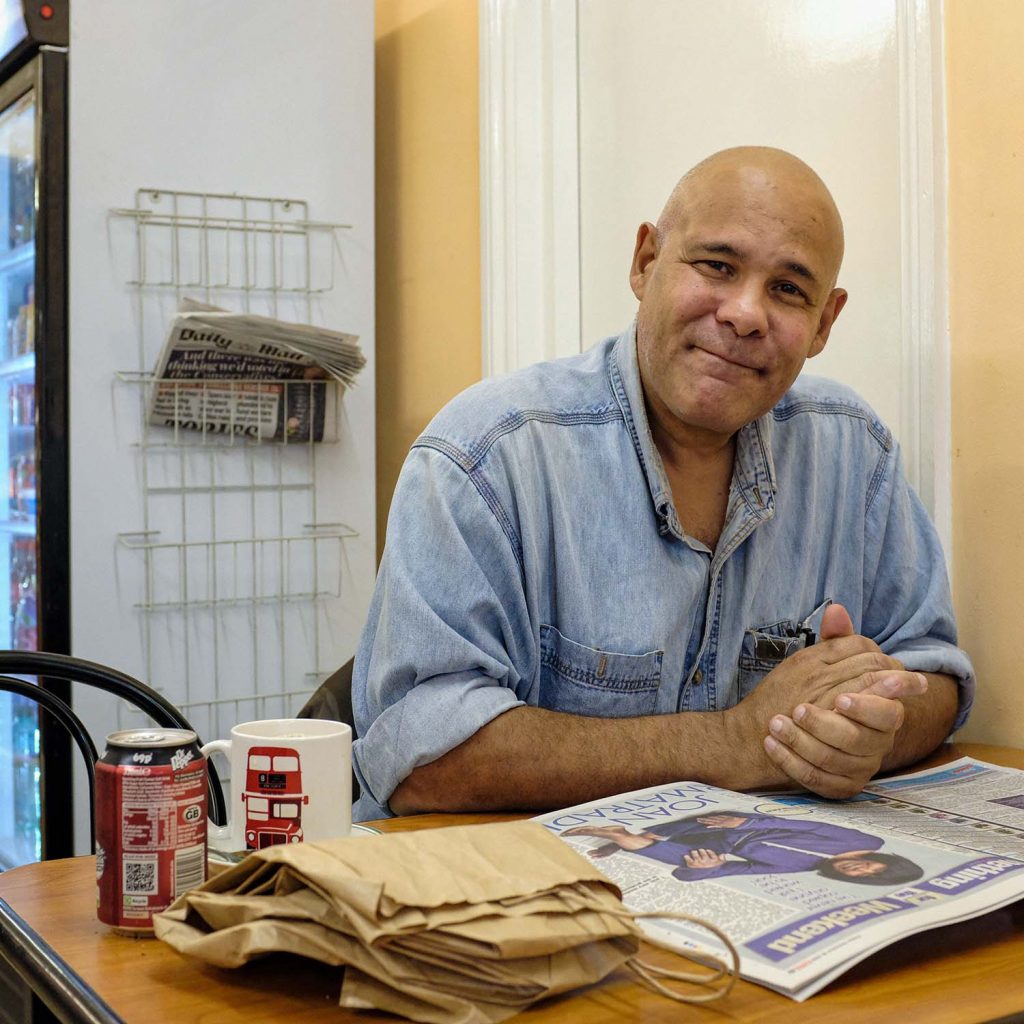
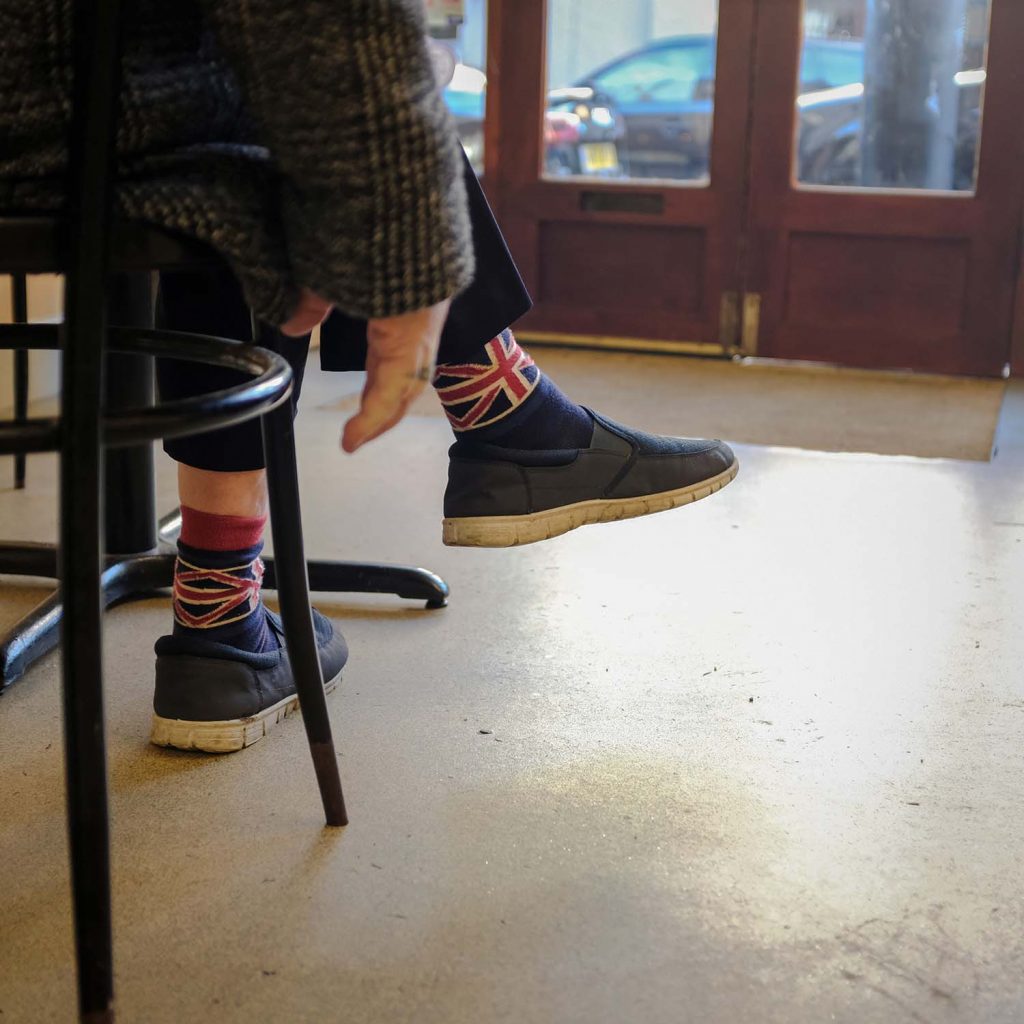
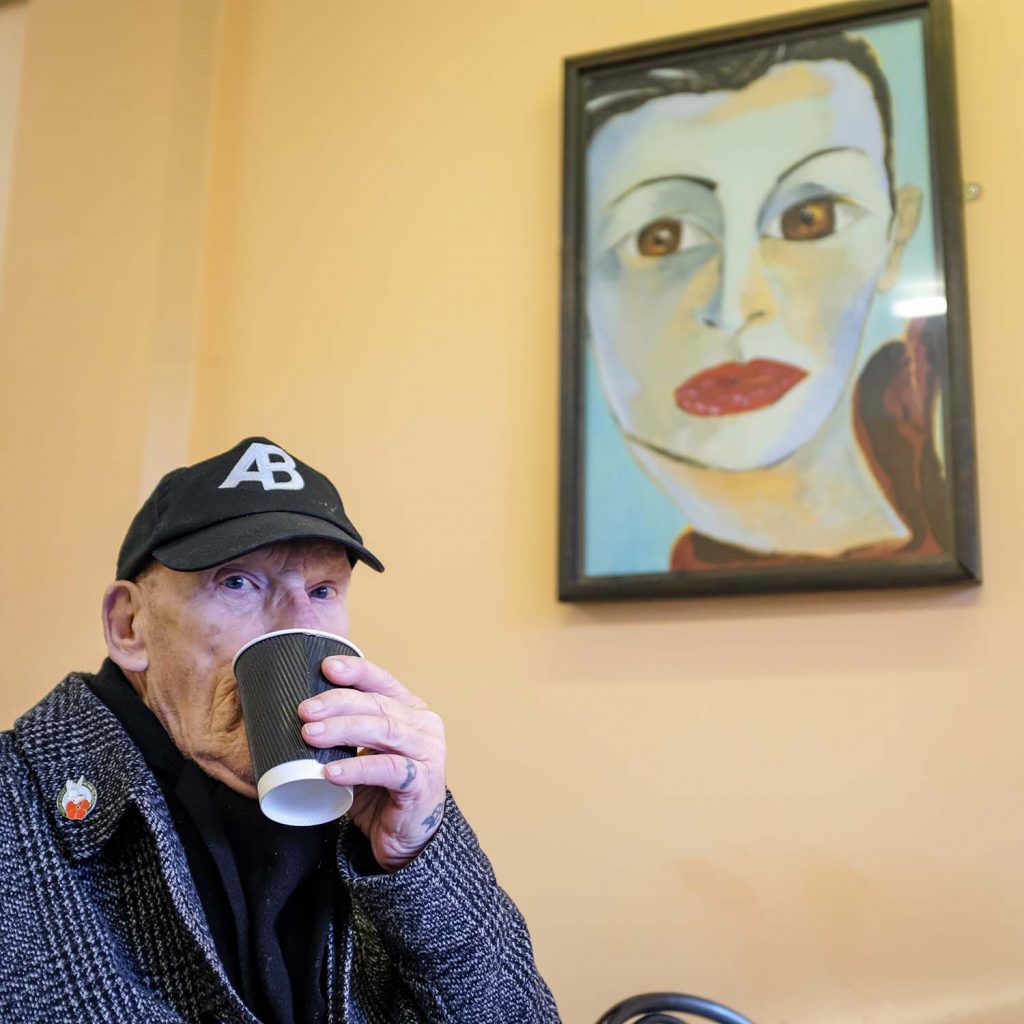
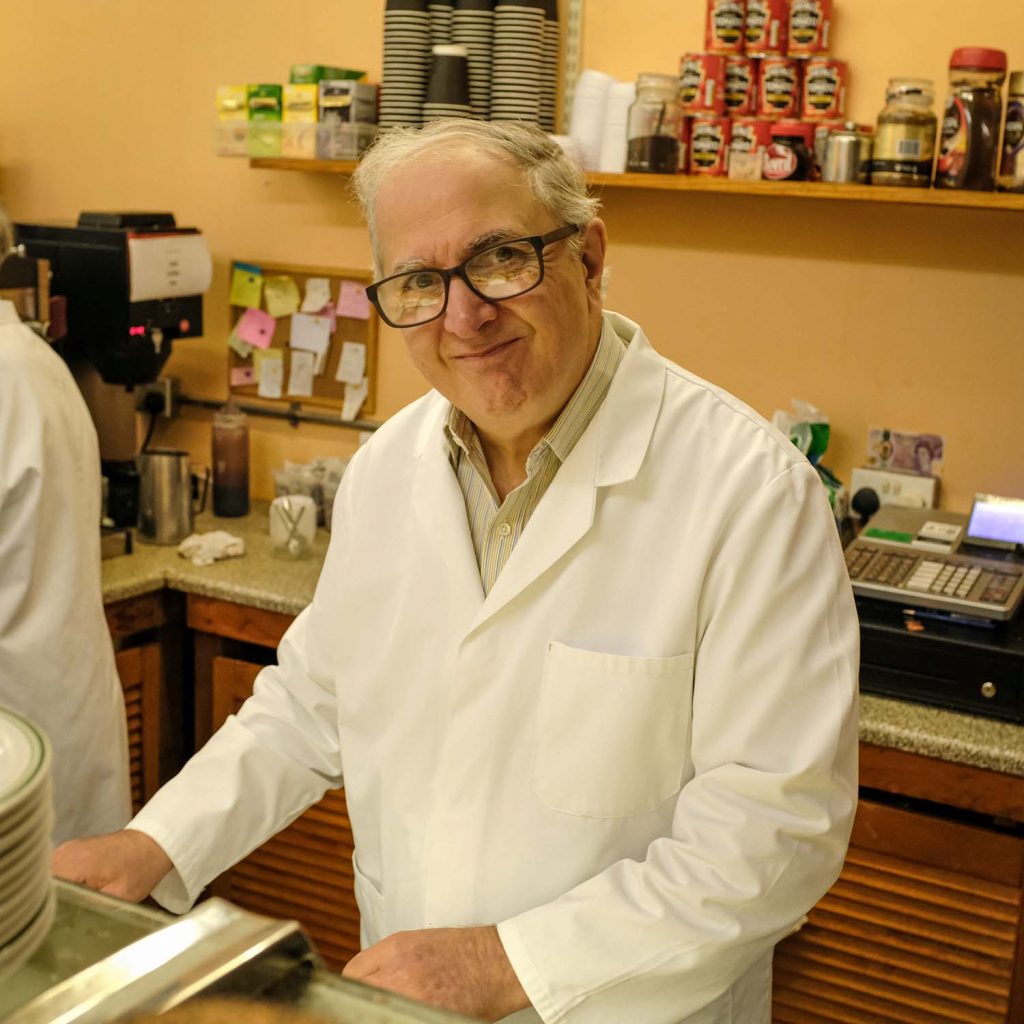
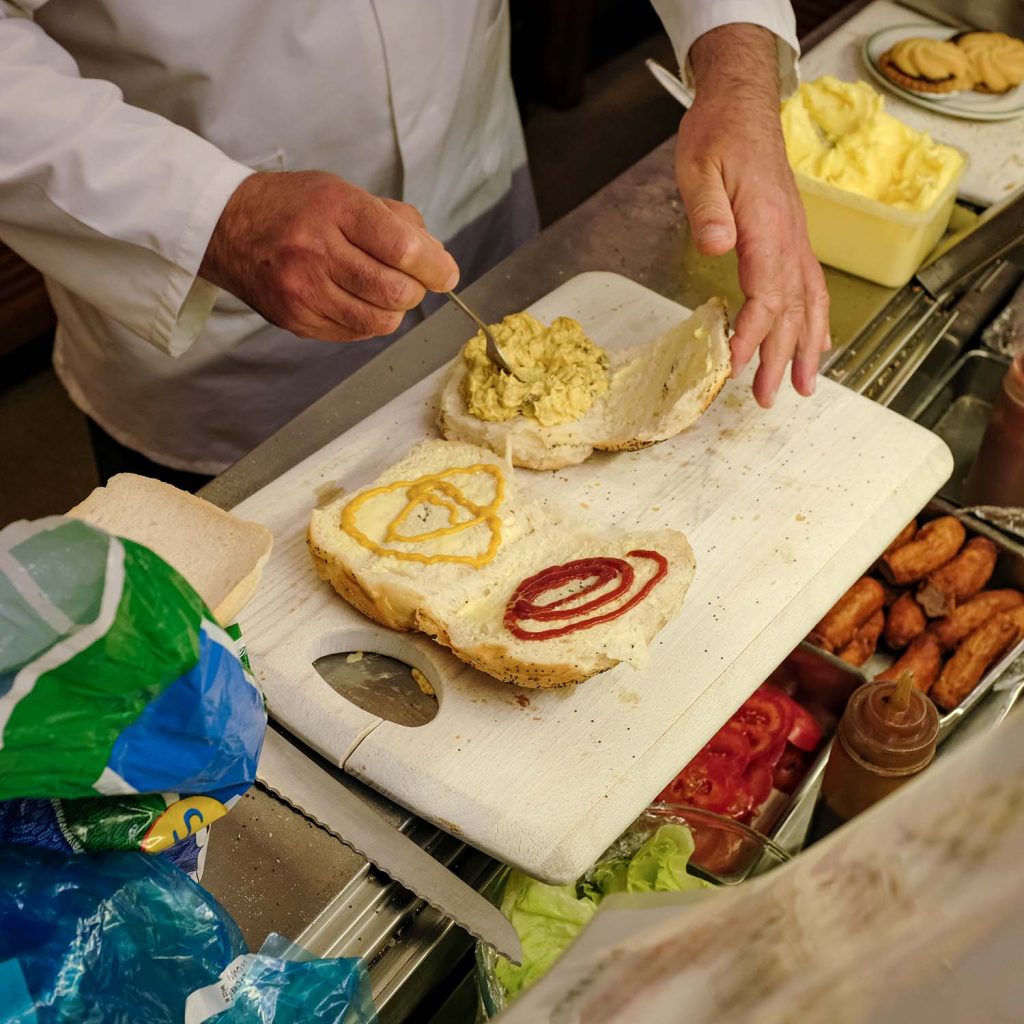
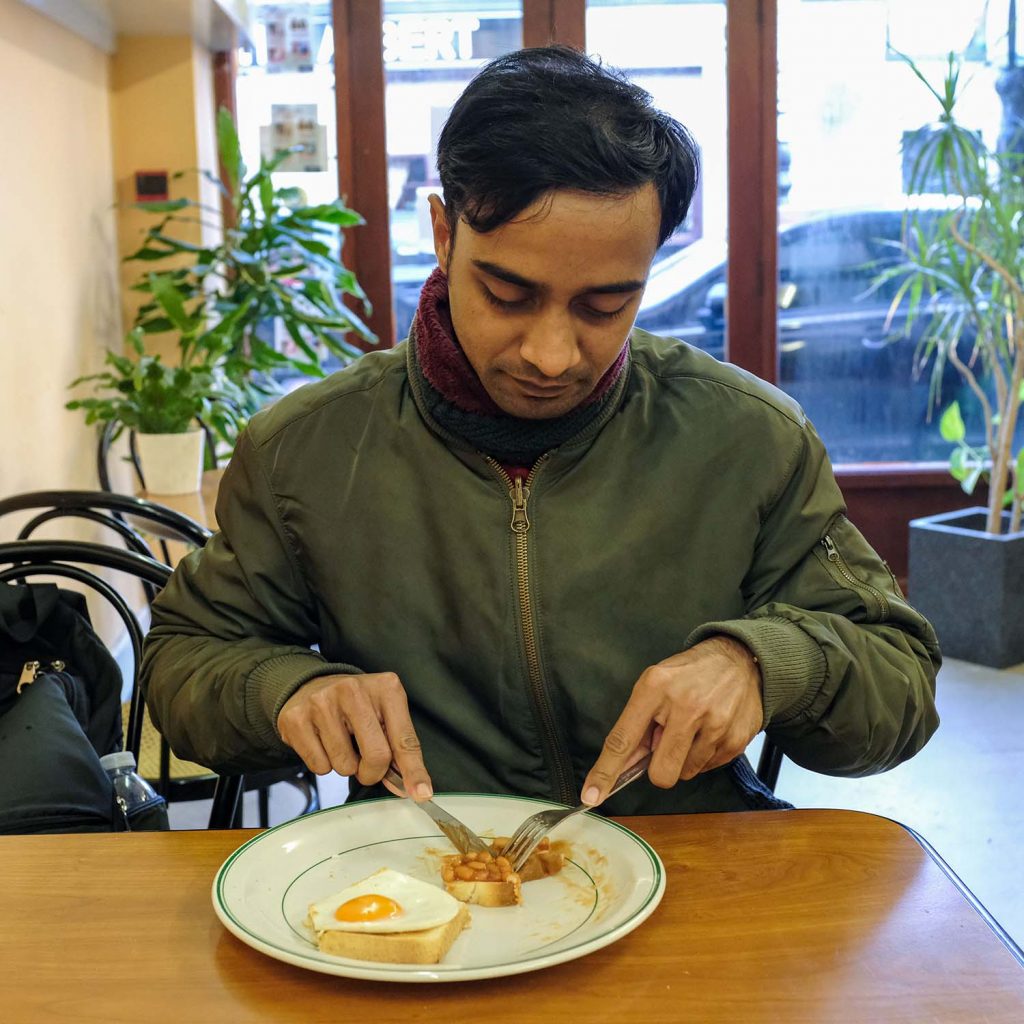
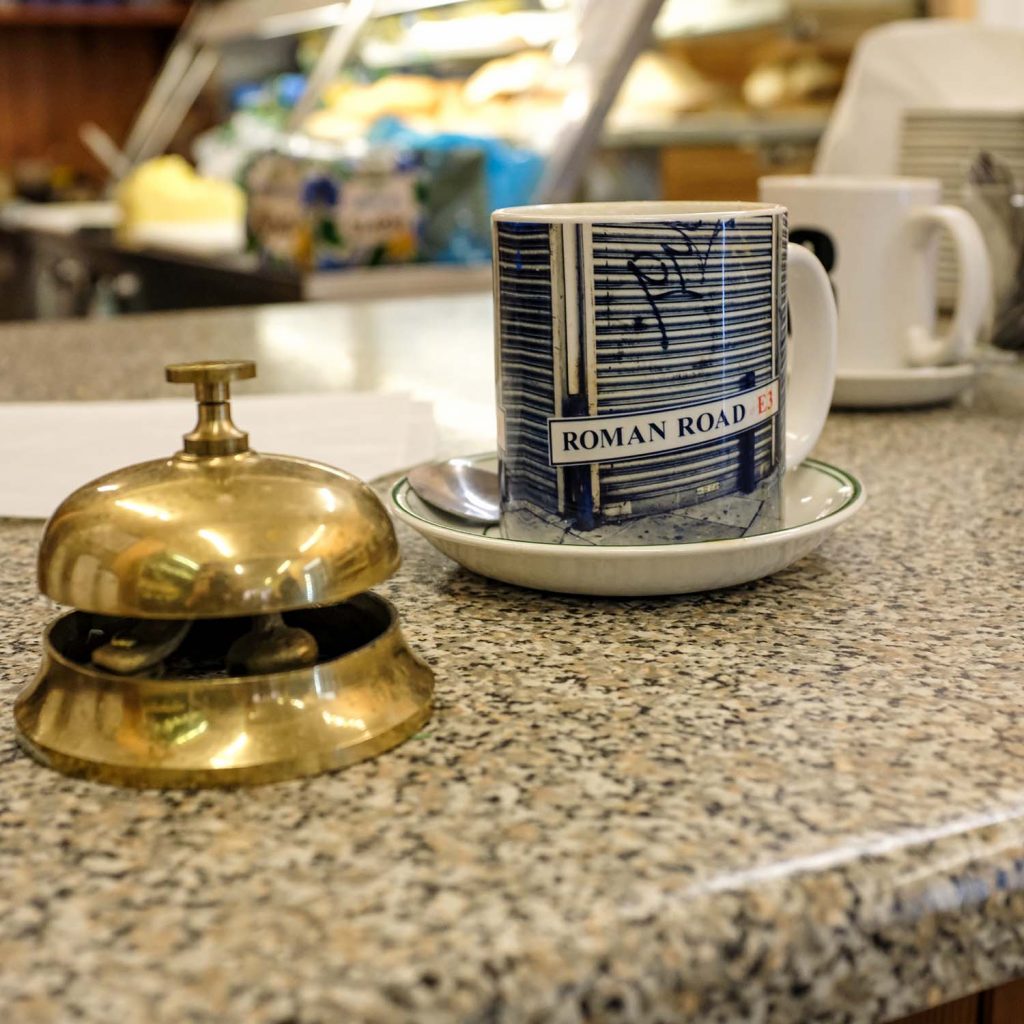
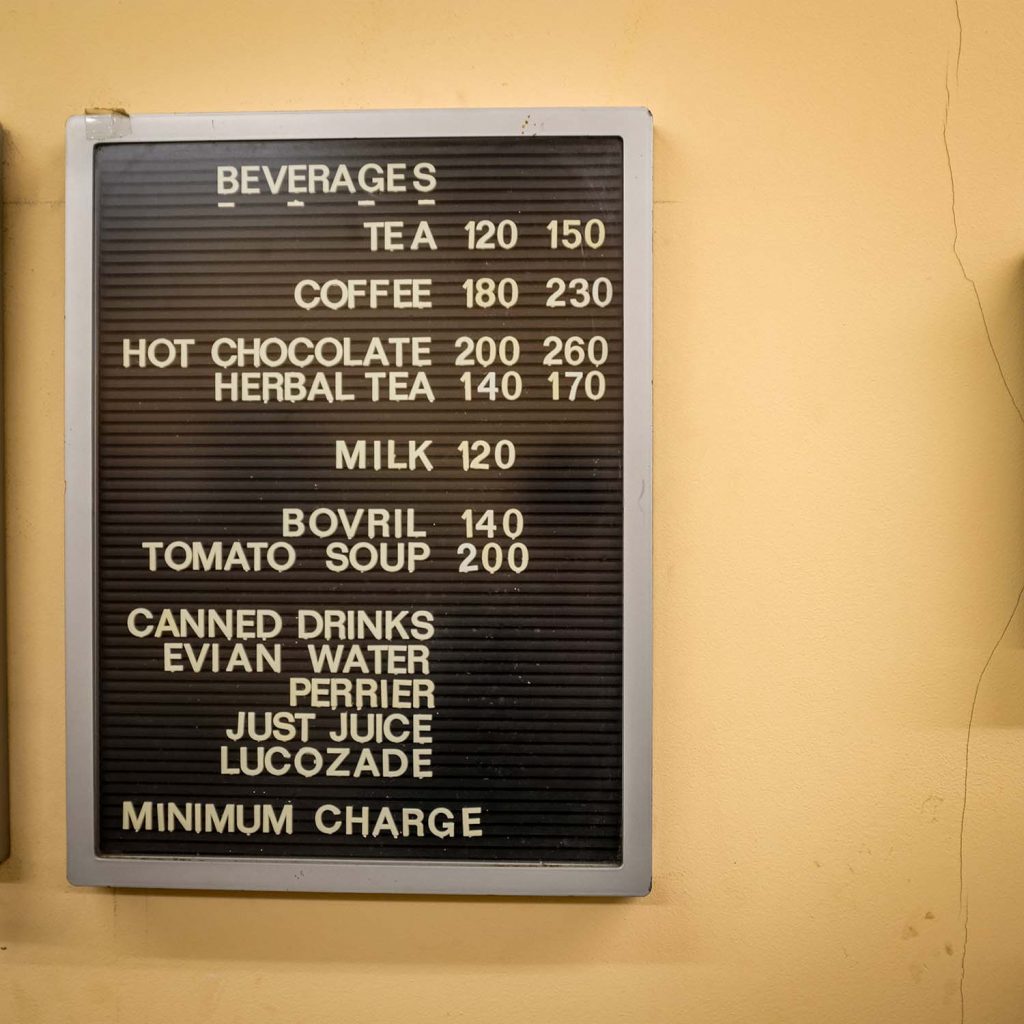
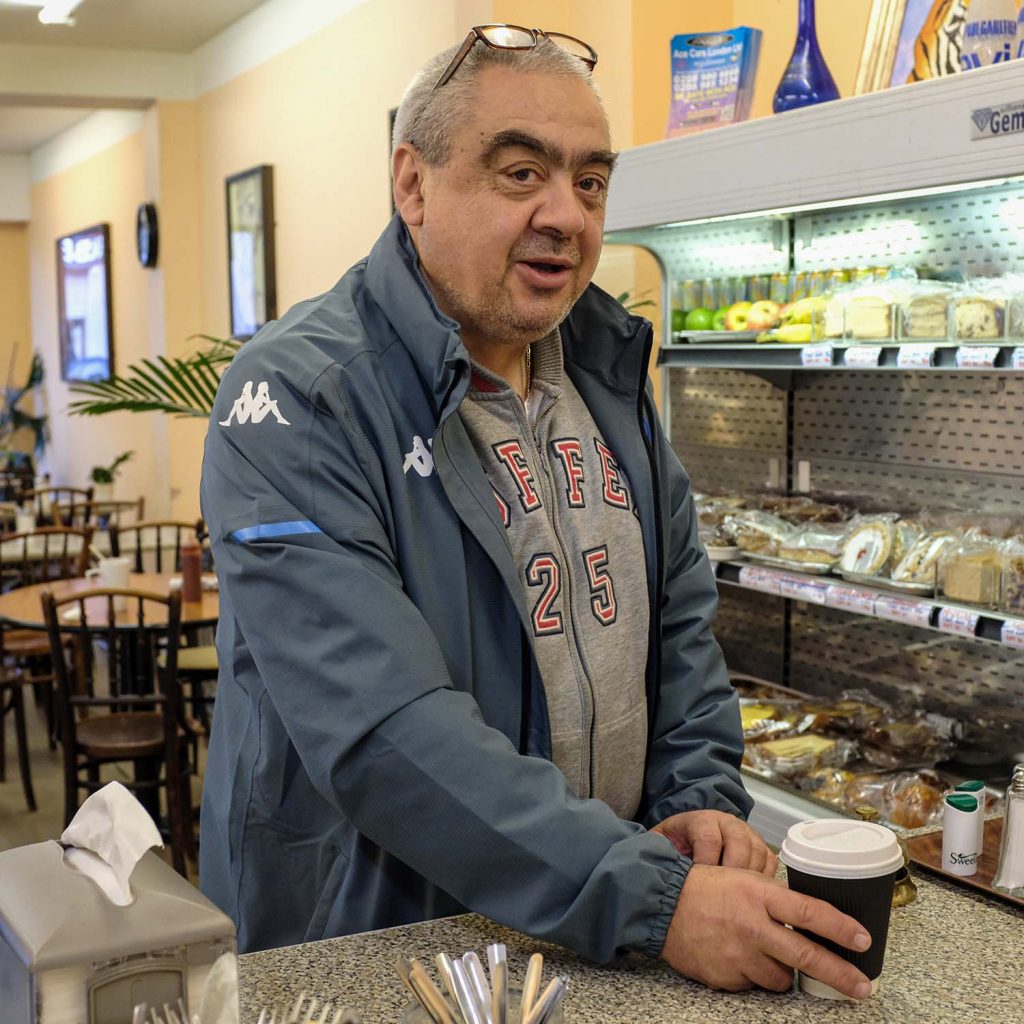
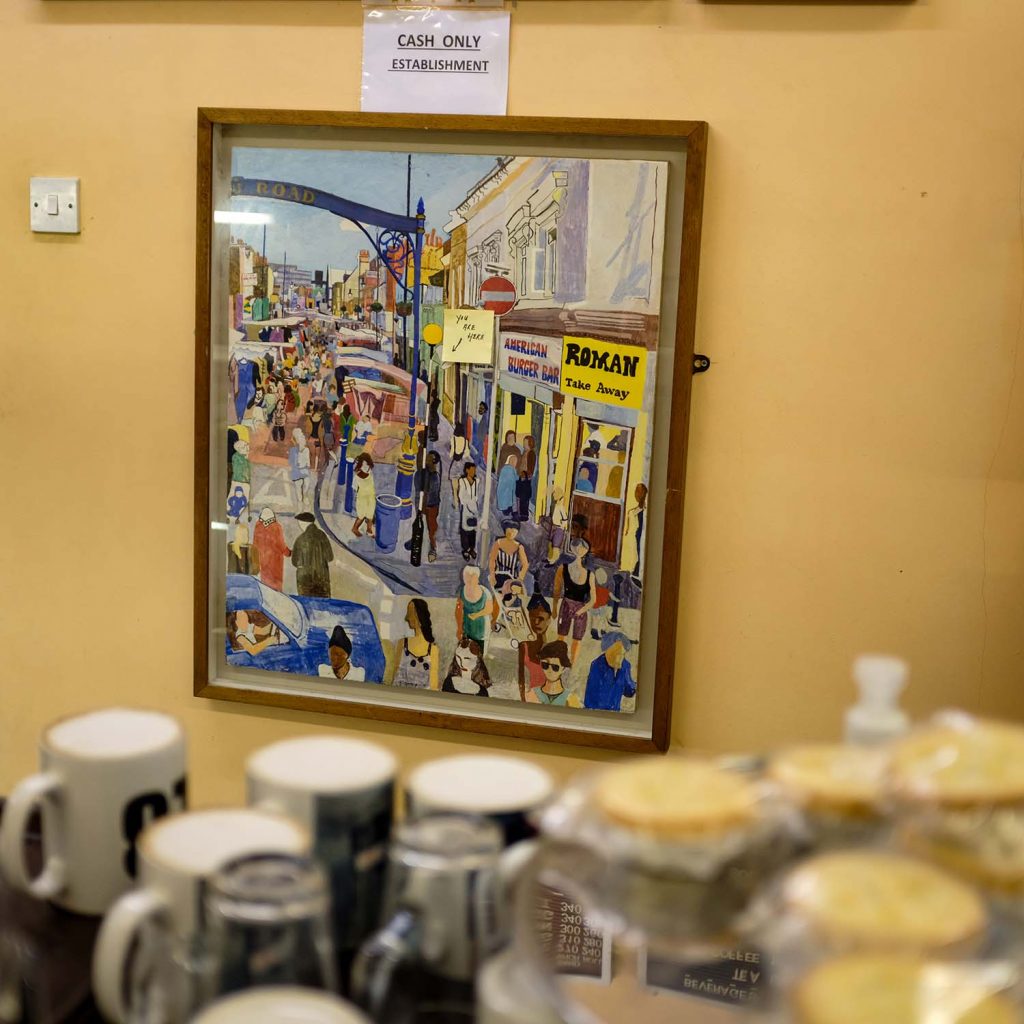
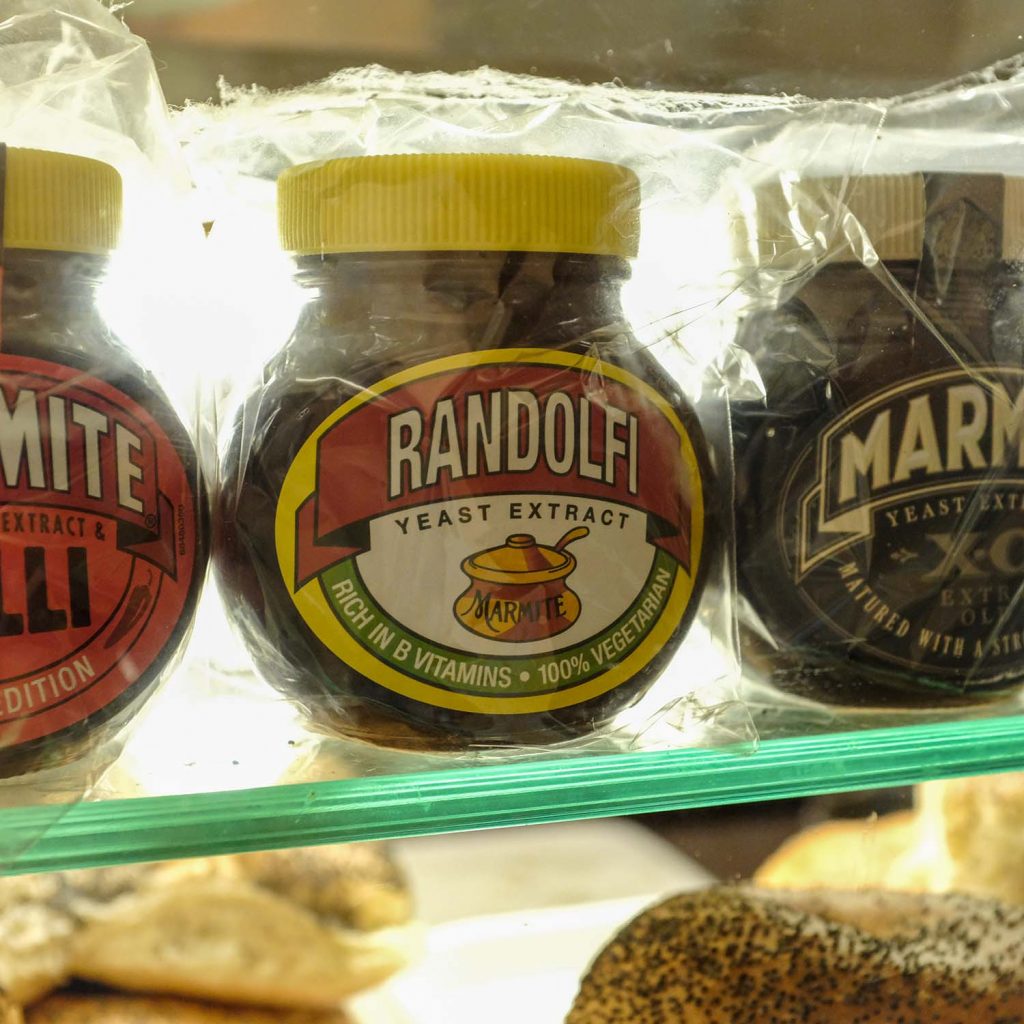
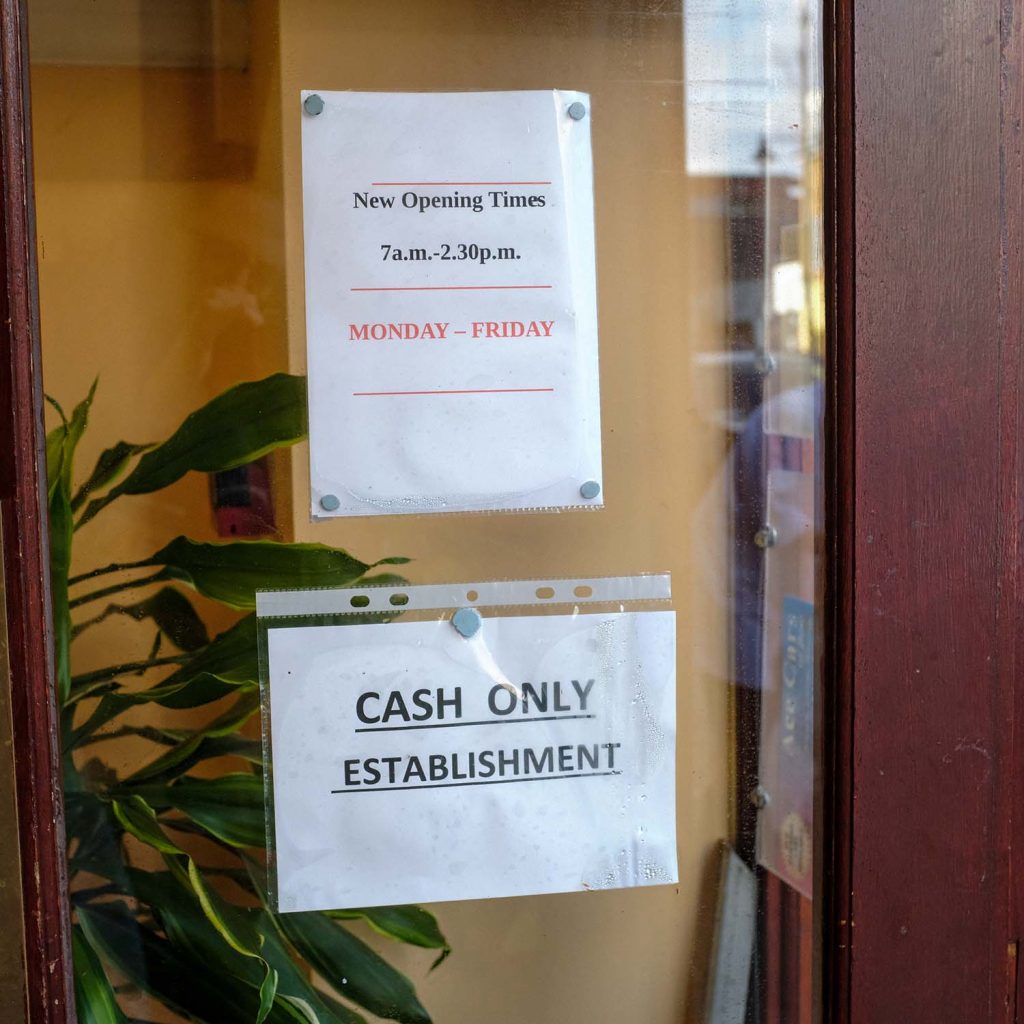
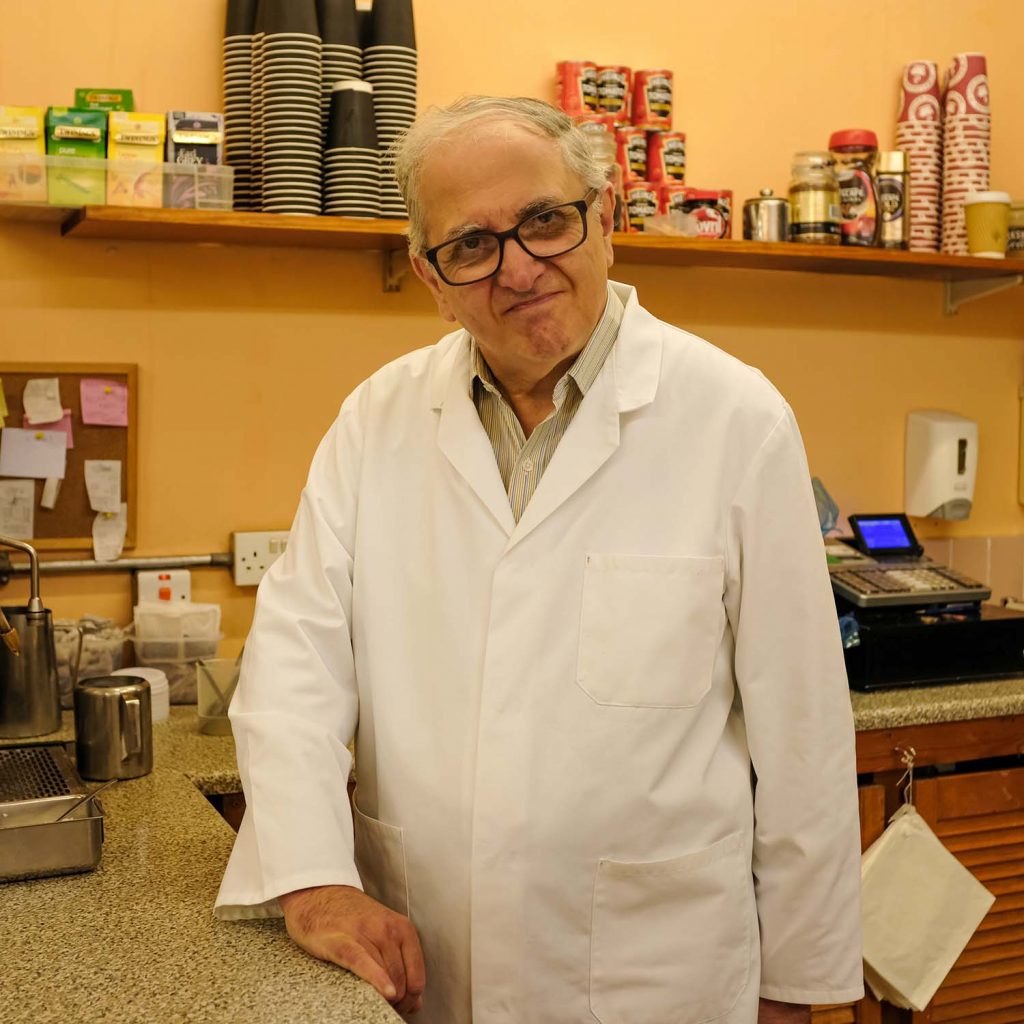
If you enjoyed this, read our interview with the family who run Abbott’s on Roman Road and interview with the people behind long-standing DIY shop Thompson’s.

